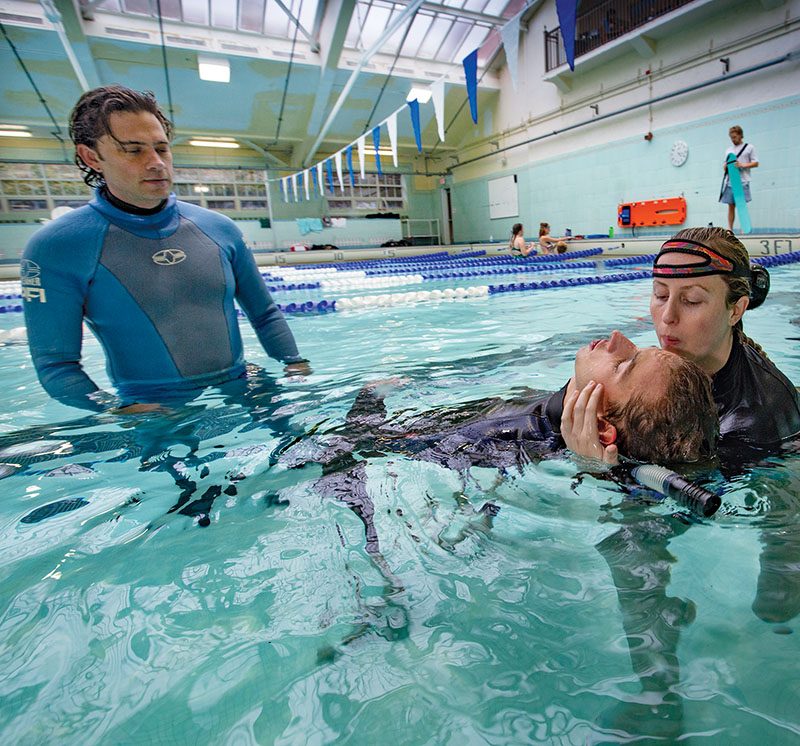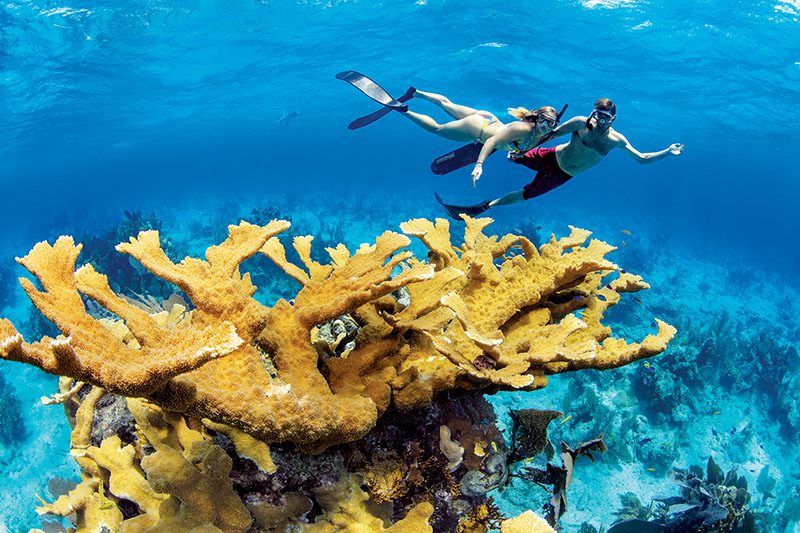Interest in breath-hold diving, also known as freediving, has grown exponentially over the past decade. Most individuals who enjoy watersports have held their breath underwater at some point, but most do so without formal training or awareness of the known dangers despite the ready availability of this lifesaving information. When practiced safely, however, breath-hold diving can be an exhilarating experience.
With the rise in freediving’s popularity across many different water sports comes large numbers of beginners who are seeking formal training. Such training offers attainable physical and mental goals with many benefits for mental and physical health and enhanced self-esteem. It also requires strict adherence to safeguards. Disregarding safety measures can bring serious risks to your lungs and brain and even result in death. Understanding the known risks and taking action to mitigate them are central to successfully enjoying any activity, and freediving is no exception.
Formal training from a certified freediving instructor, which various training agencies offer, provides the basic foundations of freediving safety. The instructor will emphasize many vital concepts during your training. Two of the most important and often repeated tenets are to never breath-hold dive alone and to avoid hyperventilating before diving.
Once certified, you’ll know how to incorporate strict safety standards into every dive, no matter how trivial they may seem. The dive briefing, which should happen before every breath-hold dive, will include analyzing risks, addressing specific concerns regarding the planned dives, and reviewing breath control, rescue techniques, and resuscitation.
Breath control is a critical point that some freedivers overlook, but it directly affects your body’s oxygen and carbon dioxide levels. Breathing is an autonomic function of the human body and can reflect internal changes in the body’s state.
Carbon dioxide is a powerful stimulant for breathing — our urge to breathe increases when we have excess carbon dioxide. Exercise or breath-holding can increase carbon dioxide and decrease oxygen levels. Lower oxygen levels (hypoxia) provide a much weaker stimulus to breathe but may be the only stimulus if we have lower carbon dioxide levels in our blood. When we hyperventilate, we lower our carbon dioxide levels and remove the powerful, carbon-dioxide-induced urge to breathe.


How do you know when to come up during a breath-hold dive? The urge to breathe is your preservation mechanism, so carbon dioxide serves as a life-preserving stimulant. Without the urge to breathe, a freediver will not know when to come up for air, even if they become dangerously hypoxic. In addition, your awareness will be compromised once hypoxia sets in, and you can become unconscious while underwater, which may result in drowning if your buddy and the safety team don’t effectively rescue you.
Oxygen in blood is mainly bound to hemoglobin for transportation, while carbon dioxide is mostly dissolved. When carbon dioxide levels drop, the blood’s chemical properties change. Blood pH rises, which strengthens the bond between hemoglobin and oxygen, resulting in oxygen not being adequately released into vital tissues, particularly the brain. When the brain doesn’t have enough oxygen to sustain normal function, it will attempt to preserve the primary functions — breathing and heartbeat — while ceasing others, such as consciousness, thought, and motor control.
With that information in mind, freedivers must recognize that awareness of their breathing is crucial for safety. We are born genetically coded with some residual evolutionary mechanisms for surviving underwater for a limited time. Freediving is the practice of unlocking those mechanisms safely, scientifically, and holistically.
There are many breathing patterns, and the two most important components are tidal volume and hyperventilation. To explain tidal volume, consider these two examples: Imagine your breathing as you fall asleep while watching TV in bed or a breath that would barely make a flame flicker close to your lips.
Explaining hyperventilation is not as simple. The concise definition is any manipulation of your breathing that drops your carbon dioxide levels. Carbon dioxide is our safety net, so we put ourselves at risk if we eliminate too much of it. Any pattern of breathing that decreases our body’s natural balance of carbon dioxide is considered hyperventilation. Long exhalations, exhaling more volume, and rapid breathing all lower carbon dioxide levels.
The ideal way to breathe before a freedive is to maintain tidal volume until the final inhalation. Breathing normally can be easier said than done though. Hyperventilation can happen inadvertently; you must correct it before attempting any breath-hold dive.
Completing proper training and allowing an adequate surface interval for recovery between dives are important for optimizing proper breathing technique. Adhering to your training and the provided guidelines will increase your safety and enjoyment of this activity.
In summary, do not hyperventilate, and always have a capable dive buddy dedicated to closely watching you throughout any pool or open-water freedive at any depth.
© Alert Diver — Q1 2023